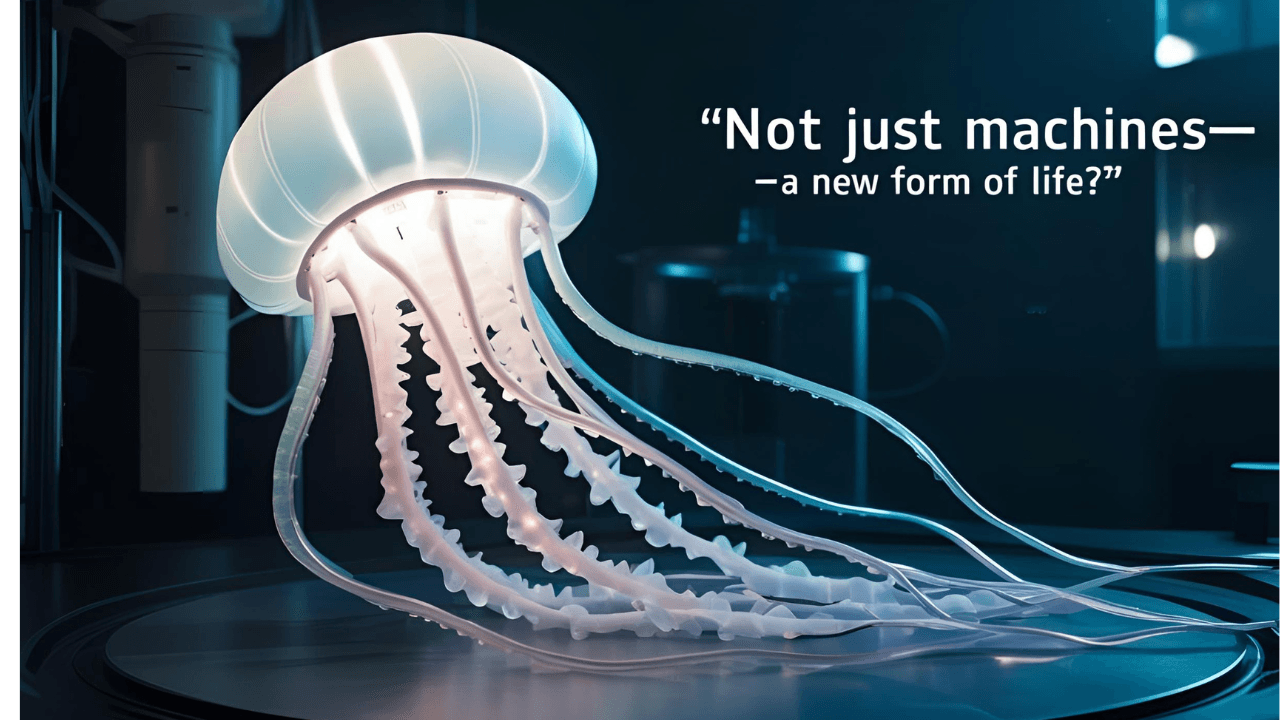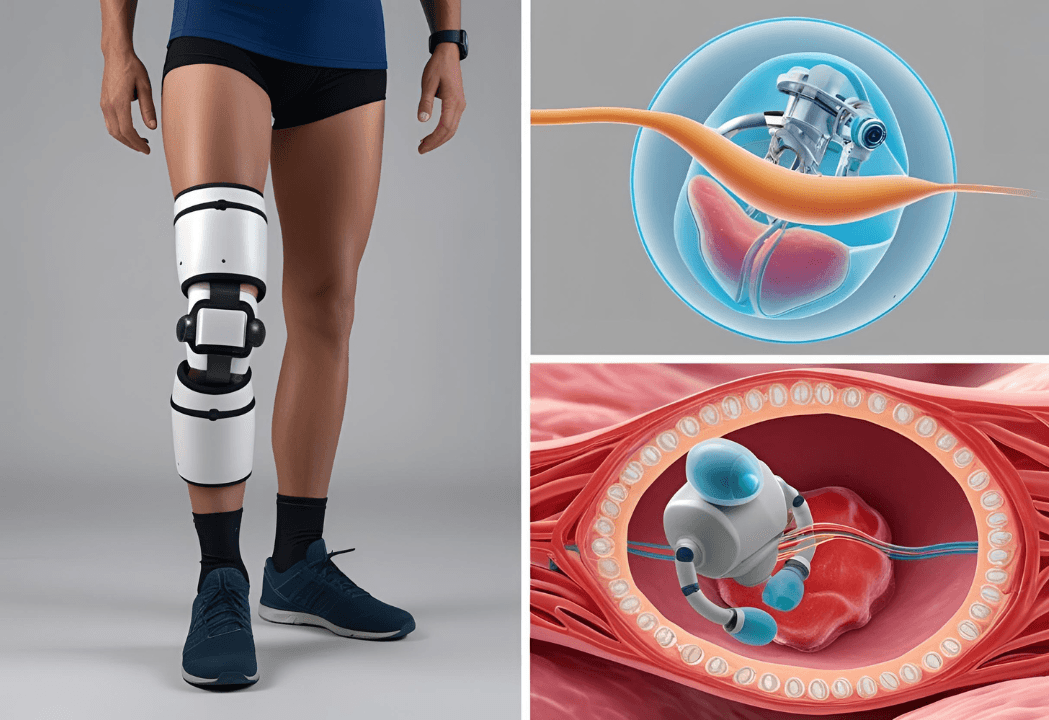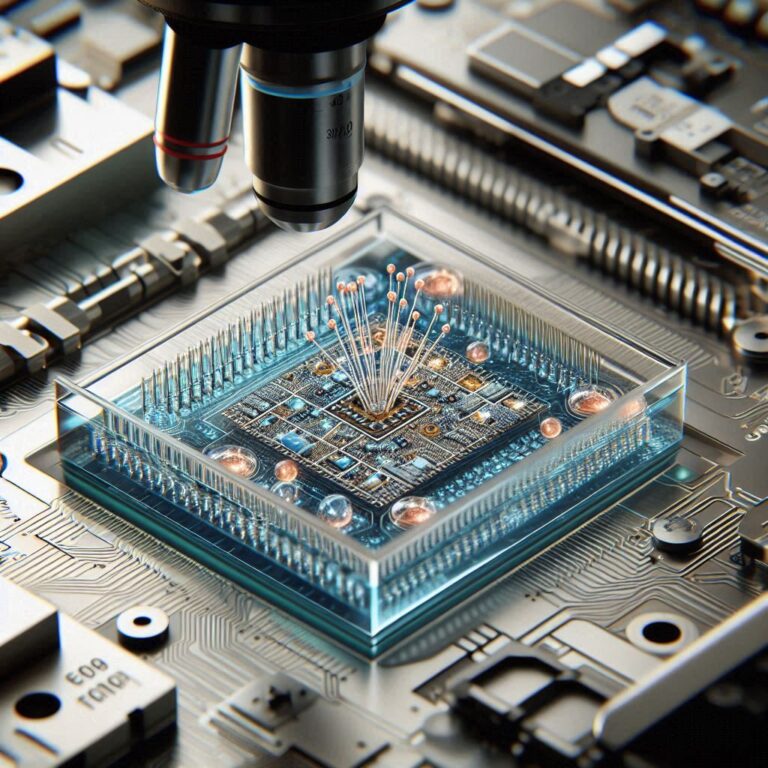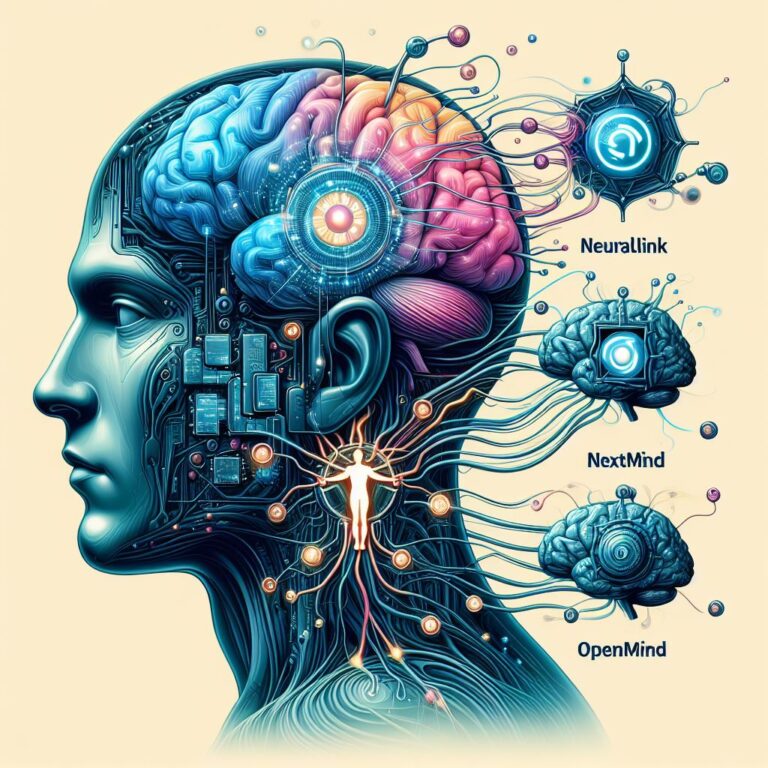🟢 Introduction: Breathing Life into Machines
In the cutting-edge world of robotics, a fascinating transformation is underway—soft robots are challenging everything we thought we knew about how machines should move, adapt, and interact. Unlike traditional rigid bots, soft robots are made from flexible materials like silicone, elastomers, and gels, allowing them to mimic the gentle, flowing motions of living organisms.
So, what are soft robots exactly? They are a new class of machines designed to bend, stretch, and reshape themselves in ways rigid robots never could. Inspired by biological systems—like octopus arms or human muscles—soft robots are redefining how we think about intelligence, motion, and design in robotics.

From surgery-assisting arms to search-and-rescue bots that squeeze through debris, the applications of soft robots are growing rapidly. In healthcare, they’re being tested for wearable assistive devices and implantable solutions that adapt seamlessly to the body. In the field of agriculture, soft robotics provide a gentle touch for managing crops, while in entertainment, they drive lifelike animatronic creations.
As we explore this new wave of robotic evolution, we must ask: Are soft robots the first step toward artificial life? By combining biology, robotics, and advanced materials, engineers are not just building tools—they may be creating machines that move, feel, and respond like living beings.
🧪 The Science of Soft Robotics
The field of soft robots artificial intelligence is built on the fusion of smart materials and advanced computational learning. At its core, soft robotics seeks to replicate biological functions with pliable machines, and artificial intelligence gives these machines the autonomy to respond, learn, and adapt.
🧬 Materials that Make Soft Robots Possible
At the heart of soft robotics are advanced materials that behave more like tissues than metals. Two revolutionary substances are liquid crystal elastomers (LCEs) and shape-memory polymers (SMPs). These materials are not only stretchable and flexible, but they also respond dynamically to stimuli like heat, light, magnetic fields, and electric currents. LCEs can contract or expand like muscles, while SMPs “remember” a preset shape and return to it after deformation. This makes them perfect for constructing robots that can slither, inflate, curl, or even mimic breathing.
These characteristics are what give soft robots their lifelike adaptability. By eliminating traditional joints and hinges, they reduce mechanical failure and become ideal for environments that require gentle, organic motion—like human tissue, ocean currents, or delicate ecosystems.
🔧 How Soft Robots Move
The movement of soft robots is as fascinating as the materials that shape them. They often use pneumatic actuators—small chambers that expand and contract with air or fluid—to create motion. Others are driven by hydraulic systems, electroactive polymers, or magnetically induced motion. These methods allow soft robots to slither like snakes, grasp objects like octopus tentacles, or compress and expand to squeeze through tight spaces.
Such agility makes them particularly valuable in unpredictable environments, where rigid robots might break or get stuck. In disaster recovery missions, for instance, a soft robot can navigate through collapsed structures where traditional bots can’t go.
🤖 The Role of AI in Soft Robotics
This is where soft robots artificial intelligence becomes transformative. Soft robots, by their very nature, have complex, nonlinear movements that are difficult to program manually. Enter artificial intelligence. Using machine learning, soft robots can learn to adapt to new tasks by observing and predicting patterns in their environment. AI helps these robots process feedback from sensors—such as touch, pressure, or temperature—and make real-time decisions without human guidance.
For example, a surgical soft robot might learn how to navigate through the vascular system by analyzing tissue resistance. Over time, it can refine its path to reduce risk and increase precision—something only possible with the synergy of soft robots artificial intelligence.
🏥 Real-World Applications
One of the most exciting uses of this technology is in minimally invasive surgery. Researchers are developing soft, worm-like robots that can navigate the body with zero damage to tissues. In wearables, flexible AI-powered exosuits assist stroke patients in regaining mobility. Meanwhile, engineers are exploring implantable soft robots that might one day regulate organ function or administer targeted drug therapy.
As research progresses, we’re only beginning to see the impact of this powerful pairing. The future of soft robots artificial intelligence holds the potential not just to replicate life—but to enhance it.
🧬 Biohybrid Robots: Merging Biology and Technology
The rise of the biohybrid robot marks a groundbreaking shift in robotics—one where the lines between living tissue and synthetic engineering are beginning to blur. These machines are not just inspired by biology; they are partially built from it.
🧠 What is a Biohybrid Robot?
A biohybrid robot is a machine that combines organic biological components—such as living muscle cells, tissues, or even neurons—with synthetic structures like polymers, electronics, or sensors. Unlike traditional robots that rely solely on motors and circuits, biohybrids tap into the innate capabilities of living systems: adaptability, self-repair, and biochemical sensing.
This field represents the intersection of biology, robotics, and synthetic life, leading us to ask profound questions: Can machines evolve? Can they regenerate? Are we on the verge of creating a new form of life?
⚙️ Applications of Biohybrids
The possibilities of biohybrid robots are enormous and largely unexplored. For instance, scientists have engineered miniature walking robots powered by muscle cells from rat hearts. These living cells beat on their own, propelling the robot forward without any electronic motor. In other studies, scientists have harnessed bacterial cells that act like sensors, allowing a robot to respond to environmental stimuli like toxins or temperature.
These applications go beyond novelty—they point to a future where biohybrid robots could serve as highly sensitive environmental sensors, medical devices that operate within the human body, or adaptive machines that respond like living organisms in real time.

🌱 Growing and Healing Robots
One of the most futuristic (and fascinating) aspects of biohybrid robot development is the potential for growth and healing. Unlike traditional machines that degrade over time, biohybrids can theoretically repair themselves using biological mechanisms. Imagine a robot made with living tissue that heals a tear in its structure, just like skin or muscle.
Some projects are even exploring growing robots, where cells multiply and strengthen the robotic system over time. These capabilities hint at a world where machines not only last longer but evolve based on the environments they’re placed in—learning, adapting, and regenerating.
🧪 Case Studies: Xenobots and Beyond
Perhaps the most famous example of a biohybrid robot is the Xenobot—a living robot created from African clawed frog (Xenopus laevis) cells. These tiny programmable blobs can move, push small objects, and even work together in swarms. What makes them so remarkable is that they’re not traditional machines at all—they’re made entirely from biological tissue but are designed and assembled by a computer.
In another compelling case, researchers have integrated plant tissues into robotic systems, creating hybrids that respond to light, humidity, or touch—just like real plants do. These systems offer not only eco-friendly solutions but also open the door to sustainable robotics that blend into the natural world.
Biohybrid robotics is no longer the stuff of sci-fi—it’s happening in real laboratories today. As this technology matures, the ethical and functional implications of creating machines that mimic, heal, and possibly reproduce like living things will be one of the most important frontiers in science and engineering.
🩺 Wearable and Implantable Soft Robots: The Future of Medicine
The fusion of biology-inspired robotics and advanced medical technology is giving rise to wearable and implantable soft robots—a transformative innovation that’s reshaping the way we deliver healthcare. These devices, built from flexible and adaptive materials, are unlocking unprecedented possibilities for diagnostics, treatment, and human augmentation.
🦾 Wearable Exoskeletons for Human Assistance
One of the most promising applications of wearable and implantable soft robots lies in soft exoskeletons—flexible robotic suits that support or enhance human movement. Unlike rigid metal exosuits, soft exoskeletons use pneumatic or hydraulic actuators to mimic natural muscle movements. This makes them more comfortable and adaptable, especially for people recovering from strokes, spinal cord injuries, or neuromuscular disorders.

These soft systems can also be programmed to respond in real time, adjusting the level of support based on the wearer’s movement and needs. As a result, they’re not just machines strapped onto bodies—they’re becoming responsive, biomechanically integrated devices that enhance human capability.
🧬 Implantable Soft Robots Inside the Human Body
While wearable devices are revolutionizing physical therapy and mobility, the future of medicine lies within. Implantable soft robots are being developed to operate inside the body, helping with everything from drug delivery to organ repair. Made of biocompatible, soft materials, these devices can deform and move naturally with organs and tissues, reducing irritation and improving long-term effectiveness.
For instance, researchers are building robotic sleeves that wrap around the heart, helping it pump in patients with cardiac conditions. Others are working on gastrointestinal bots that can monitor internal systems like glucose levels or blood pressure, then release medication precisely where and when it’s needed.
These internal robots may one day replace or enhance traditional implants with AI-powered, responsive systems that interact with the body at a cellular level.
🛠️ Advancements in Medical Soft Robotics
The field of medical robotics is moving rapidly, especially in the development of soft-bodied surgical tools for minimally invasive procedures. These instruments can twist, bend, and navigate tight internal spaces that rigid tools cannot access. With improved dexterity and precision, they are enabling surgeries that are faster, safer, and cause less trauma to the body.
Some soft robots are also integrated with smart sensing materials, allowing surgeons to feel pressure or resistance during operations—something previously impossible with standard robotic tools.
These innovations are particularly important for surgeries involving delicate structures like the brain, spinal cord, or cardiovascular system.
🤖 AI Integration for Smarter Healthcare
The real power of wearable and implantable soft robots lies in their integration with artificial intelligence. By using AI, these devices can learn and adapt to the unique physiology of each patient. For example, a soft robotic knee brace could analyze walking patterns and adjust its support dynamically, reducing strain and speeding up recovery.
In implantable applications, AI algorithms can process real-time data from internal sensors and trigger specific actions—like adjusting insulin delivery based on blood sugar levels or increasing support to a failing heart when needed.
This combination of AI and soft robotics represents the next frontier of personalized medicine, where machines don’t just follow commands—they anticipate needs, respond intelligently, and evolve with the patient.
As wearable and implantable soft robots continue to evolve, we are witnessing a convergence of biology, robotics, and artificial intelligence that has the potential to redefine healthcare as we know it.
⚙️ Soft Robots in Industry: A Game Changer for Automation
Soft robots aren’t just confined to labs or futuristic hospitals—they’re already transforming how industries operate. Built with pliable, adaptive materials, these robots are ideal for tasks where precision and delicacy are more important than brute strength. As automation evolves, soft robots are increasingly becoming essential tools in manufacturing, logistics, and quality control.
🏭 The Role of Soft Robots in Manufacturing
In today’s high-speed, complex manufacturing environments, traditional rigid robots often fall short when dealing with tasks requiring gentleness or adaptability. Soft robots offer a new solution: they can conform to uneven surfaces, squeeze into tight spaces, and interact safely with humans. From assembling small electronic parts to inspecting hard-to-reach crevices, they provide the dexterity and flexibility that rigid robots lack.
Major industries such as automotive, electronics, and consumer goods are already integrating soft robotic grippers and actuators to streamline production without damaging materials.
🍓 Handling Delicate Objects with Precision
Industries like food processing, pharmaceuticals, and advanced electronics benefit enormously from the gentle touch of soft robots. A tomato, for instance, can be picked up, sorted, and packaged without bruising—thanks to grippers that mimic the human hand. In electronics, microchips and delicate glass components can be handled safely without causing cracks or contamination.
This makes soft robots invaluable in environments where product integrity is paramount.
🚀 The Future of Soft Robotics in Automation
As machine learning and adaptive sensing technologies mature, soft robots are expected to take on more autonomous and intelligent roles. Future manufacturing systems might rely on swarms of soft robotic arms that can reconfigure themselves, adapt to different production needs in real time, and even perform predictive maintenance on machinery.
Moreover, combining soft robotics with AI opens the door for self-optimizing factories, where automation is not just fast and efficient but resilient, flexible, and safe for human collaboration.
⚠️ Ethical Considerations: Are We Playing God?
With the rise of soft robots that bend, learn, adapt, and heal, ethical questions are becoming harder to ignore. As we blur the line between machines and living organisms, we must ask: What are the consequences of creating life-like entities? Where do we draw the line between utility and morality?
🧠 The Rise of Artificial Life
Some researchers argue that soft robots, especially when combined with biological tissue or AI, are the early stages of artificial life. Technologies such as biohybrid robots and Xenobots are already pushing the boundaries of how we define life and consciousness. If these systems can move, heal, and even evolve, do they deserve rights or protections?
The more life-like our machines become, the more society must grapple with the implications of creating them.
🤖 AI and Robotic Autonomy
Soft robots powered by advanced AI can make decisions, respond to stimuli, and operate independently. But who is responsible if one malfunctions or causes harm? As these systems grow more autonomous, we must address issues around accountability, safety, and consent—especially in fields like healthcare or military applications.
There’s also the philosophical dilemma: if a machine learns to adapt and make decisions, could it one day become self-aware?
🔍 Surveillance, Consent, and Control
From implantable medical bots to surveillance drones made of soft, shape-shifting materials, the potential for invasive use is real. Will patients have full control over their medical implants? Could soft robots be used in public spaces to monitor behavior without consent?
Clear regulations and ethical guidelines are essential to prevent misuse and to protect individual rights.
🧑🏭 Impact on Employment and Society
The adoption of soft robots in healthcare, manufacturing, and service industries will inevitably reshape the job landscape. While these robots promise efficiency and safety, they may also displace human workers in roles that involve repetitive or delicate tasks. The challenge is to ensure that the rise of soft robotics leads to augmented human labor, not widespread unemployment.
Governments, companies, and educators must collaborate to reskill workers and ensure an inclusive, equitable transition into this new era of robotics.
🔮 The Future of Soft Robotics: Artificial Life on the Horizon?
When we ask, “What are soft robots?”, we’re no longer just talking about machines. We’re discussing an evolving field that’s merging robotics, biology, and artificial intelligence into something that may one day resemble artificial life. As materials science, AI, and biocomputing continue to advance, the line between living and non-living systems begins to blur.
🚀 Advancements and Beyond
In the future, soft robots could potentially possess the ability to self-organize, self-repair, and even evolve, further blurring the lines between artificial and biological systems. Imagine a robot that grows new limbs when damaged, or that learns how to navigate new terrain by reorganizing its body structure. Researchers are already developing biohybrid systems that mimic developmental processes found in nature—like tissue regeneration and morphogenesis.
This signals a profound shift: soft robots aren’t just tools; they’re potentially the building blocks of artificial life.
🏠 From Industry to Personal Life
The role of soft robots is expected to expand far beyond factories and hospitals. We may soon see them integrated into daily human life. Picture wearable soft exosuits assisting elderly individuals, soft robotic pets offering emotional support, or shape-shifting assistants that adapt to your needs and preferences in real time.
Whether in caregiving, customer service, or education, the flexibility and safety of soft robots make them ideal companions in human environments.
🔄 Blurring the Lines Between Machine and Life
Perhaps the most thrilling—and unsettling—aspect of this field is how soft robots are moving toward life-like autonomy. As they gain sensors, reflexes, decision-making capabilities, and adaptability, they begin to act less like machines and more like organisms. Some can even respond to emotional cues or adapt based on real-time environmental changes.
In this brave new world, what are soft robots, really? Are they tools, partners, or precursors to an entirely new form of existence?
🌍 Conclusion: Are We Creating Artificial Life?
The rise of soft robots and biohybrid AI solutions isn’t just a technological milestone—it’s a philosophical and societal turning point. As these machines become more flexible, intelligent, and biologically integrated, they start to resemble the very systems we associate with life itself.
We’ve seen how soft robots can bend and heal, how biohybrids can grow and evolve, and how AI can make them responsive to the world around them. These aren’t science fiction concepts—they’re happening now, in labs and industries across the globe.
But with that power comes profound responsibility. Biohybrid AI solutions raise questions about consent, ethics, and the boundaries of life. Should we regulate machines that mimic human or animal traits? Can we control the evolution of systems we’ve only just begun to understand?
As we venture into this exciting future, one question remains:
Are soft robots merely machines, or are we, unknowingly, giving birth to the first generation of artificial life?
💡 Want to explore more mind-blowing innovations pushing the boundaries of science and technology?
Don’t miss these related articles:
-
🤖 Miniature Robots: The Future of Medical and Industrial Robotics – Discover how tiny machines are transforming surgery, exploration, and manufacturing.
-
🧠 Liquid Crystal Elastomers: Smart Materials That Move – Dive into the fascinating world of flexible materials that mimic muscles.
-
🔁 Shape-Memory Polymers: Materials That Remember – Learn how materials that “remember” their original form could revolutionize robotics and beyond.
-
🪞 Smart Mirrors That Diagnose You – See how everyday objects are turning into diagnostic health tools right in your home.
Each article dives deep into technologies that blur the line between artificial and biological—perfect if you’re curious about the future of life-like machines.






